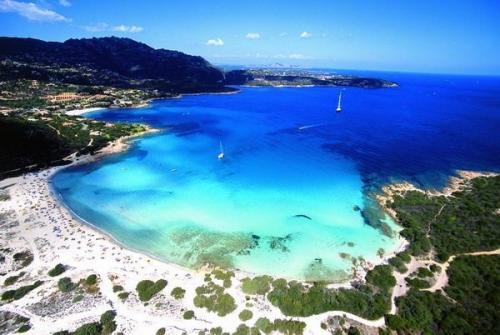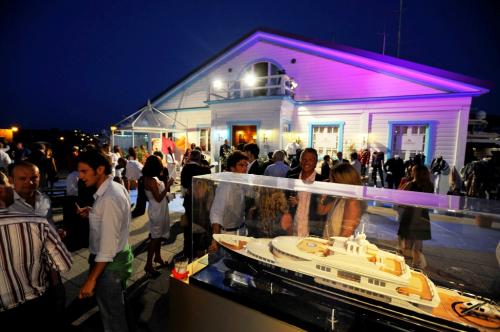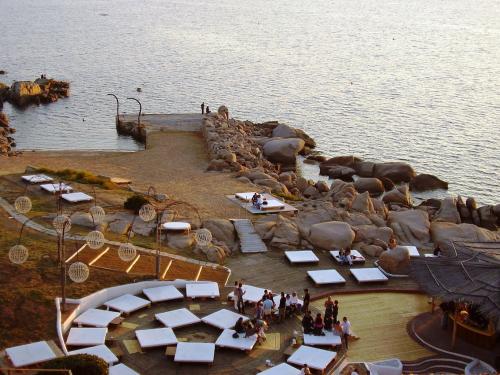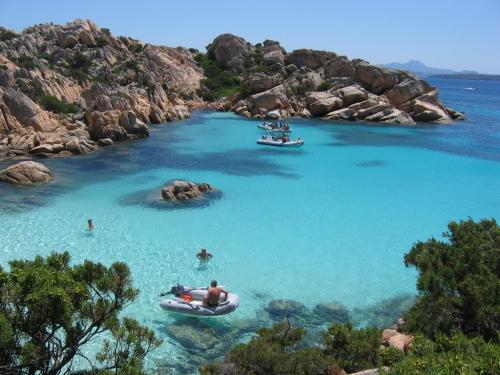
| inspiring the next travel experience....




|

|
HOME | NEWS | GLAMOUR HOUSES | TOURS | SPORT & LEISURE | FOOD | LIFESTYLE | SERVICES |
|---|
HOME |
|---|
NEWS |
GLAMOUR HOUSES |
TOURS |
SPORT & LEISURE |
FOOD |
LIFESTYLE |
SERVICES |
  Discover Costa SmeraldaPorto Cervo is the real and oldest centre of the the Emerald Coast. This village was born in 1962, under the will of the prince Karim Aga Khan, who bought these charming lands and built here the first hotel. Nowadays the vital centre of the village starts from the small square to the church of Stella Maris. In the portal of the church, some scenes from the Annunciation are carved; the church houses a "Mater Dolorosa" and a Seventeenth-century organ.The harbour is one of the Bettener equipped in the Mediterranean Sea, and it can hold 500 boats. Along the panoramic road there are the beaches of Pevero, Romazzino, and Capriccioli, followed by Cala di Volpe, Portisco, Portu li Cogghi and Rena Bianca.  All these beaches are surrounded by beautiful Mediterranean Bush, with crystal clear waters and white sand, which becomes pink on the strand. Porto Cervo is a very exclusive tourist resort whose traditions are linked not to religious feasts, but to sports happenings. In the last days of March there is the International Rally "Costa Smeralda", while in May the "Costa Smeralda International Amateur Golf Week- Gran Premio Pevero" takes place. If you love sea and speed , you cannot miss the "Grand Prix Offshore Costa Smeralda", on the first week of June. Sailing-boat lovers will surely enjoy the "Week of the Bocche", in the first fortnight of September; and every two years, the Sardinia Cup. Another interesting tournament, Costa Smeralda International pro/am (golf), takes place in October. Porto Rotondo is situated in the northeastern part of Sardinia, in Cugnana Gulf. This Village was created by two counts, Luigino e Nicolo' Dona' Delle Rose, and it was built in a perfectly circular bay (rotondo means circular)At first a hotel was opened, then some Italian celebrities, enchanted by the wonderful landscape built their villas there, and became a very exclusive summer resort, frequented by the Italian jet-set. The surroundings of Porto Rotondo, from Cugnana to Suaredda, are full of beautiful beaches (like Ira) with wonderful granitic rocks, not easy to reach.  Northwards, in Emerald Coast direction, along the panoramic road, there are the beaches of Portisco, Rena Bianca or Razza di Giuncu, with a wonderful blue sea, Portu Li Cogghi, of Del Principe, probably the most beautiful of this area thanks to the granitic floor, that makes the water clearer, followed by those of Cala di Volpe, La Celvia and Liscia Ruja, surrounded by red granitic rocks, and Long Beach. The archipelago of La Maddalena, lies not far off the extreme northeastern coast of Sardinia. It is made up of four main islands, La Maddalena, Santo Stefano, Caprera and Spargi, situated near the Gallura's coastline and another three to the north, Budelli, Razzoli and Santa Maria, in the southern part of the straits of Bonifacio, surrounded by many rocks and numerous islets. All of granite, these islands are enchanting thanks to the rocks, the beaches and the sea. La Maddalena is the biggest island of the Archipelago (19.061 s. km.). It is the only one of the seven islands to host a stable population. The higher hill, Guardia Vecchia, is not over 156 metres of height. The land, an undulating plateau with granite outcrops, does not afford cultivation and is mainly covered with low Mediterranean bushes. Since 1996, it has been a National Park to safeguard the rare flora and fauna that still populate the islands. The flora is the typical Mediterranean one and is composed by 750 kinds of plants, like strawberry, "lentischio" (mastic tree), myrtle and rosemary but also pinewood, holm oaks and juniper bushes. In the park numerous rare specimen of lifebird nest, like the storm's bird, the cormorant and the Corsican gull. Particularly rich is the underwater life that can boast of the presence of the red encrusting seaweed, Lithophyllum lechenoides (very rare and protected), and of the huge Patella ferruginea.  Caprera is the second biggest island of the Archipelago. It is found to the east of La Maddalena. From the summit of Monte Telaione, reachable by a granite stairway, you can admire an extraordinary panorama of the whole island, as far as the northeastern coast of Sardinia and Santa Teresa di Gallura. Still unpopulated, frequented by only a few migrant shepherds from the 18th century, it was bought by Giuseppe Garibaldi in 1856, who lived there for long intervals, and died there in 1882. The house and the other buildings of Garibaldi's, are nowadays used as a museum, called "Compendio Garibaldino". Freed from an almost complete military occupation, it was declared, in 1982, a nature reserve. At Caprera, there is the tourist village of Club Mediterran?e and a Sailing Centre of the Touring Club Italiano. Between Palau and La Maddalena is founded Santo Stefano, from where Napoleon shelled La Maddalena island in 1793. A few kilometres after, you find Spargi, with a circular form, surrounded eastward by a thin white sandy beach, that someone named "Boomerang". It's the most rich in water and vegetation. Northwards, there are the islands of Budelli, (well known for the Spiaggia Rosa (pink beach) wonderful scenery of an Antonioni's film, nowadays forbidden to visitors), Razzoli, accessible only from the west part, and Santa Maria with flat and fertile ground. About 27 kilometres from Olbia, not far from the south-eastern coast, there is the small village of San Teodoro, in the alluvial plain of Siniscola, in the northern side of Baronia. Not far from the village there is the homonymous pond of San Teodoro, one of the most interesting of the eastern Sardinian coast. It is teeming with fish thanks to its direct connection to the sea and it extends on a surface of about 230 hectares, surrounded by a very rich flora.  Here you can also see different kinds of ornithological specimen like coots, little terns, herons and wild ducks. Eight kilometres from San Teodoro, towards Olbia, you will find Cala Ghilgolu, just in front of Tavolara island. This zone is characterised by a beautiful crystal clear sea but, above all, by a tract of granite reefs that has beautiful modelled by the wind strange rocks of which one became famous in 1996 for having been damaged by stupid tourists: la Tartaruga. Other two beautiful rocks are "I Merletti" (the laces) and "Gallo di Gallura" (Gallura cock). Eight kilometres from San Teodoro there is one of the most beautiful Sardinian coast, Capo coda Cavallo, with an evocative landscape. This promontory, very rich in creeks, has crystal clear waters and a very rich variety of sea and terrestrial flora and fauna. ...BACK | ||
  Discover Costa SmeraldaPorto Cervo is the real and oldest centre of the the Emerald Coast. This village was born in 1962, under the will of the prince Karim Aga Khan, who bought these charming lands and built here the first hotel. Nowadays the vital centre of the village starts from the small square to the church of Stella Maris. In the portal of the church, some scenes from the Annunciation are carved; the church houses a "Mater Dolorosa" and a Seventeenth-century organ.The harbour is one of the Bettener equipped in the Mediterranean Sea, and it can hold 500 boats. Along the panoramic road there are the beaches of Pevero, Romazzino, and Capriccioli, followed by Cala di Volpe, Portisco, Portu li Cogghi and Rena Bianca.  All these beaches are surrounded by beautiful Mediterranean Bush, with crystal clear waters and white sand, which becomes pink on the strand. Porto Cervo is a very exclusive tourist resort whose traditions are linked not to religious feasts, but to sports happenings. In the last days of March there is the International Rally "Costa Smeralda", while in May the "Costa Smeralda International Amateur Golf Week- Gran Premio Pevero" takes place. If you love sea and speed , you cannot miss the "Grand Prix Offshore Costa Smeralda", on the first week of June. Sailing-boat lovers will surely enjoy the "Week of the Bocche", in the first fortnight of September; and every two years, the Sardinia Cup. Another interesting tournament, Costa Smeralda International pro/am (golf), takes place in October. Porto Rotondo is situated in the northeastern part of Sardinia, in Cugnana Gulf. This Village was created by two counts, Luigino e Nicolo' Dona' Delle Rose, and it was built in a perfectly circular bay (rotondo means circular)At first a hotel was opened, then some Italian celebrities, enchanted by the wonderful landscape built their villas there, and became a very exclusive summer resort, frequented by the Italian jet-set. The surroundings of Porto Rotondo, from Cugnana to Suaredda, are full of beautiful beaches (like Ira) with wonderful granitic rocks, not easy to reach.  Northwards, in Emerald Coast direction, along the panoramic road, there are the beaches of Portisco, Rena Bianca or Razza di Giuncu, with a wonderful blue sea, Portu Li Cogghi, of Del Principe, probably the most beautiful of this area thanks to the granitic floor, that makes the water clearer, followed by those of Cala di Volpe, La Celvia and Liscia Ruja, surrounded by red granitic rocks, and Long Beach. The archipelago of La Maddalena, lies not far off the extreme northeastern coast of Sardinia. It is made up of four main islands, La Maddalena, Santo Stefano, Caprera and Spargi, situated near the Gallura's coastline and another three to the north, Budelli, Razzoli and Santa Maria, in the southern part of the straits of Bonifacio, surrounded by many rocks and numerous islets. All of granite, these islands are enchanting thanks to the rocks, the beaches and the sea. La Maddalena is the biggest island of the Archipelago (19.061 s. km.). It is the only one of the seven islands to host a stable population. The higher hill, Guardia Vecchia, is not over 156 metres of height. The land, an undulating plateau with granite outcrops, does not afford cultivation and is mainly covered with low Mediterranean bushes. Since 1996, it has been a National Park to safeguard the rare flora and fauna that still populate the islands. The flora is the typical Mediterranean one and is composed by 750 kinds of plants, like strawberry, "lentischio" (mastic tree), myrtle and rosemary but also pinewood, holm oaks and juniper bushes. In the park numerous rare specimen of lifebird nest, like the storm's bird, the cormorant and the Corsican gull. Particularly rich is the underwater life that can boast of the presence of the red encrusting seaweed, Lithophyllum lechenoides (very rare and protected), and of the huge Patella ferruginea.  Caprera is the second biggest island of the Archipelago. It is found to the east of La Maddalena. From the summit of Monte Telaione, reachable by a granite stairway, you can admire an extraordinary panorama of the whole island, as far as the northeastern coast of Sardinia and Santa Teresa di Gallura. Still unpopulated, frequented by only a few migrant shepherds from the 18th century, it was bought by Giuseppe Garibaldi in 1856, who lived there for long intervals, and died there in 1882. The house and the other buildings of Garibaldi's, are nowadays used as a museum, called "Compendio Garibaldino". Freed from an almost complete military occupation, it was declared, in 1982, a nature reserve. At Caprera, there is the tourist village of Club Mediterran?e and a Sailing Centre of the Touring Club Italiano. Between Palau and La Maddalena is founded Santo Stefano, from where Napoleon shelled La Maddalena island in 1793. A few kilometres after, you find Spargi, with a circular form, surrounded eastward by a thin white sandy beach, that someone named "Boomerang". It's the most rich in water and vegetation. Northwards, there are the islands of Budelli, (well known for the Spiaggia Rosa (pink beach) wonderful scenery of an Antonioni's film, nowadays forbidden to visitors), Razzoli, accessible only from the west part, and Santa Maria with flat and fertile ground. About 27 kilometres from Olbia, not far from the south-eastern coast, there is the small village of San Teodoro, in the alluvial plain of Siniscola, in the northern side of Baronia. Not far from the village there is the homonymous pond of San Teodoro, one of the most interesting of the eastern Sardinian coast. It is teeming with fish thanks to its direct connection to the sea and it extends on a surface of about 230 hectares, surrounded by a very rich flora.  Here you can also see different kinds of ornithological specimen like coots, little terns, herons and wild ducks. Eight kilometres from San Teodoro, towards Olbia, you will find Cala Ghilgolu, just in front of Tavolara island. This zone is characterised by a beautiful crystal clear sea but, above all, by a tract of granite reefs that has beautiful modelled by the wind strange rocks of which one became famous in 1996 for having been damaged by stupid tourists: la Tartaruga. Other two beautiful rocks are "I Merletti" (the laces) and "Gallo di Gallura" (Gallura cock). Eight kilometres from San Teodoro there is one of the most beautiful Sardinian coast, Capo coda Cavallo, with an evocative landscape. This promontory, very rich in creeks, has crystal clear waters and a very rich variety of sea and terrestrial flora and fauna. ...BACK |
LET'S TRY THE NEW : |
|
Powered by MMS © EUROTEAM 2015 |
|---|